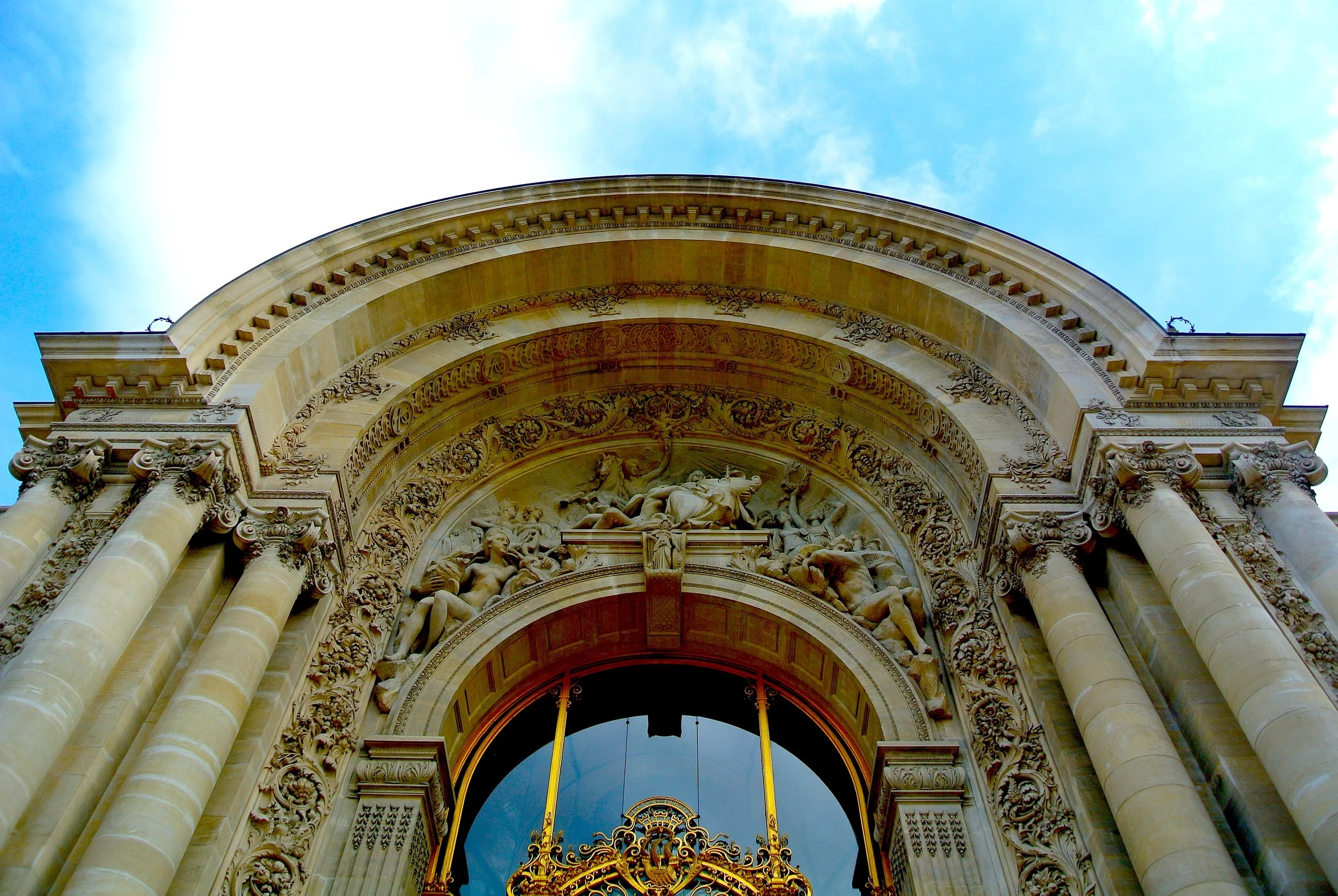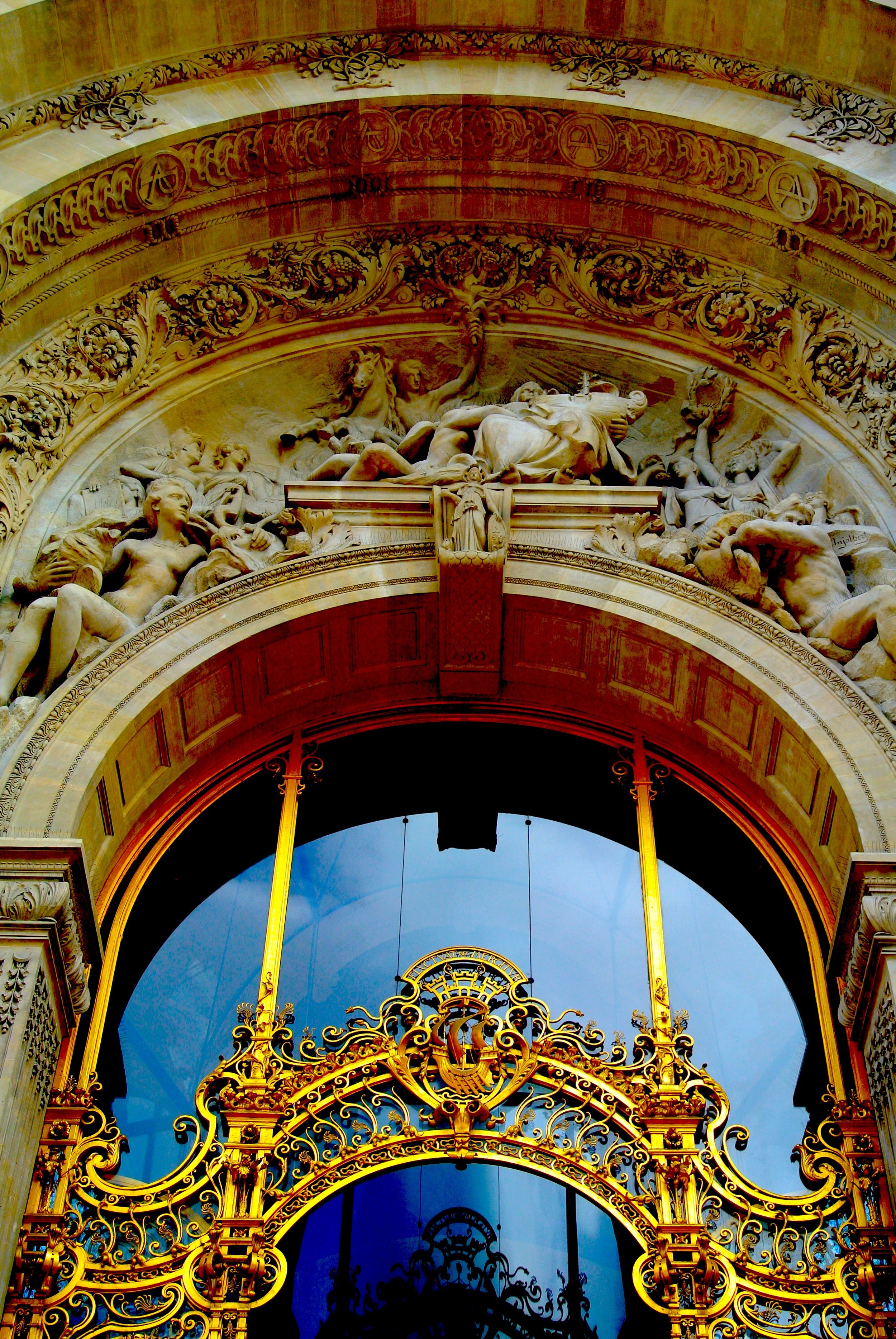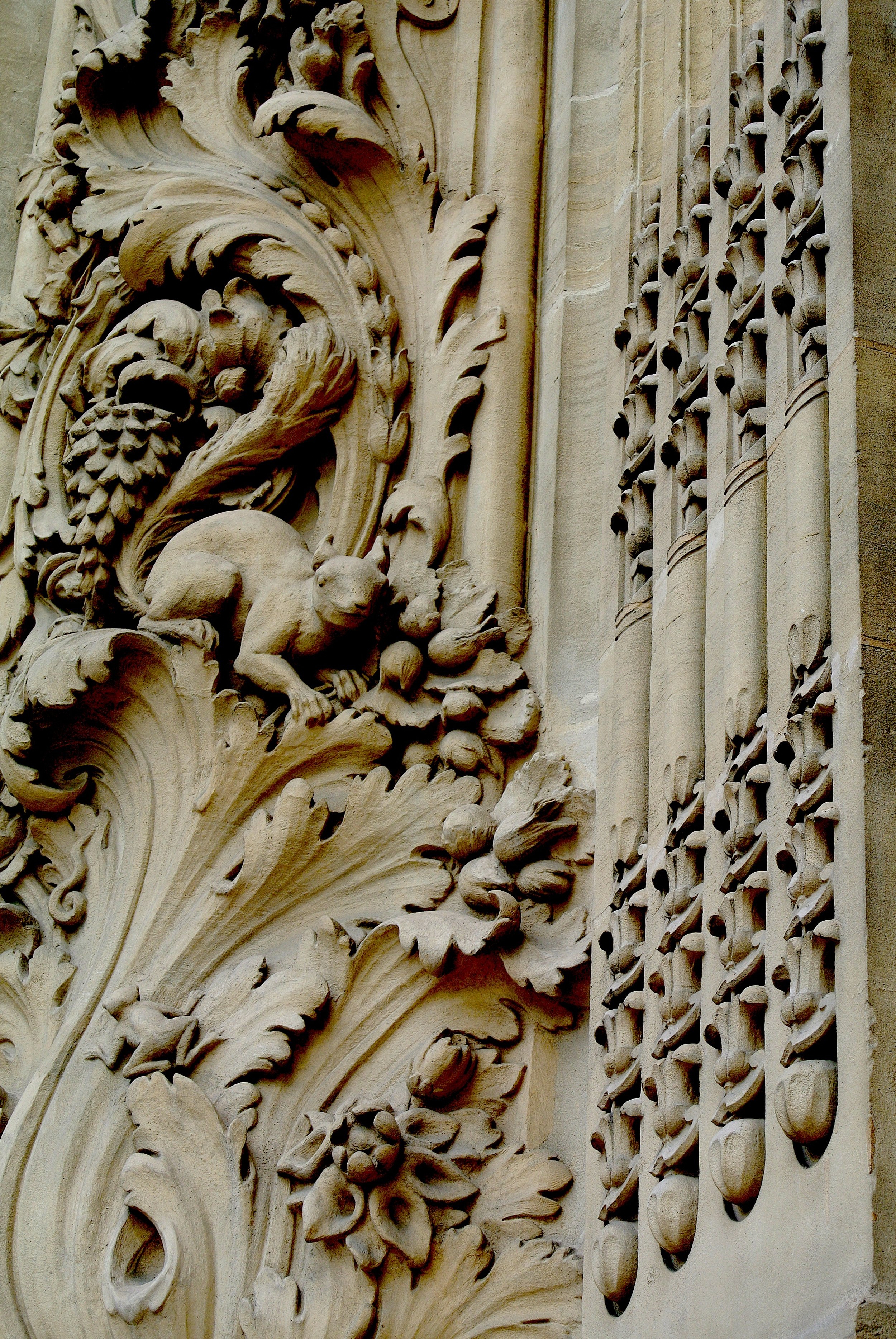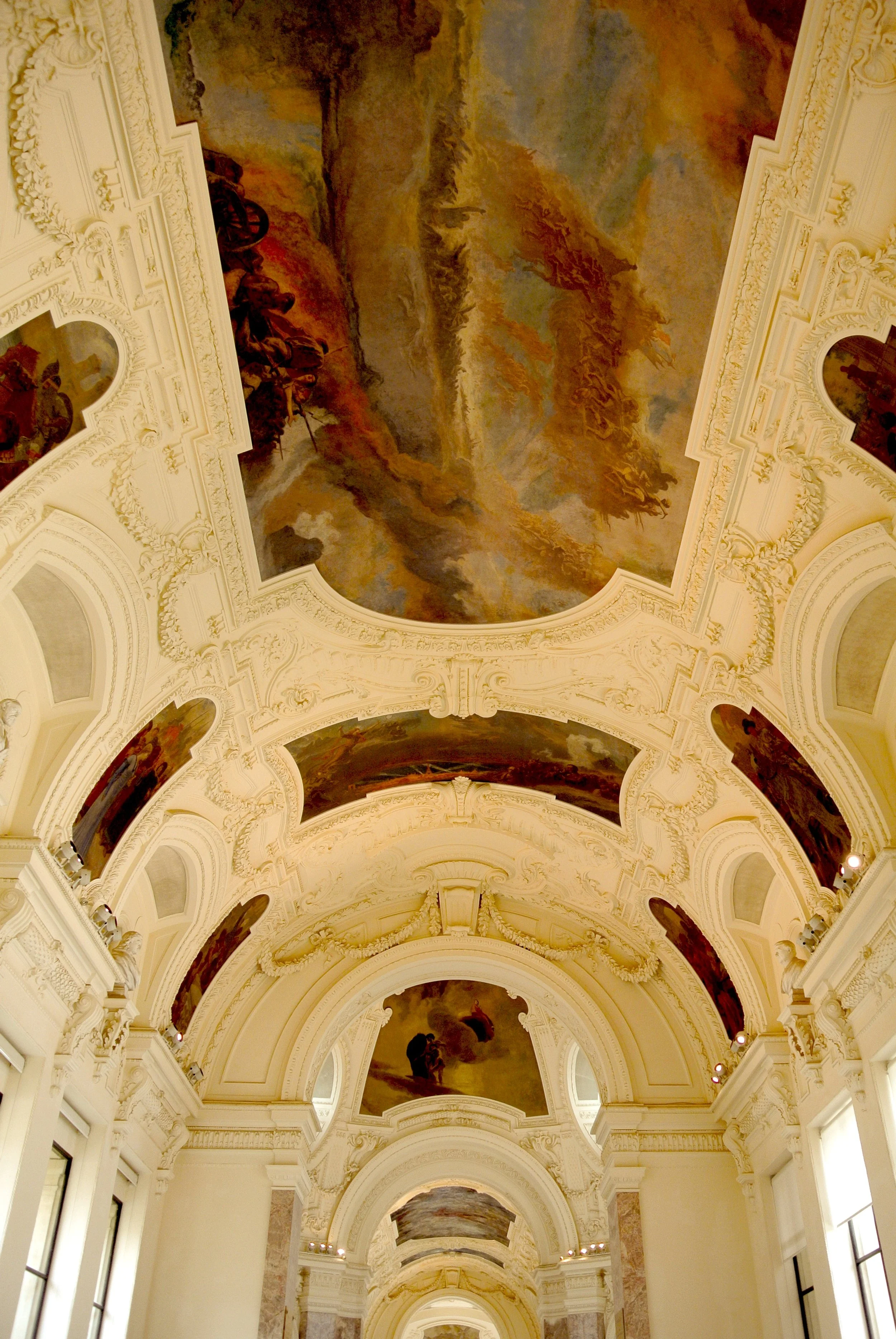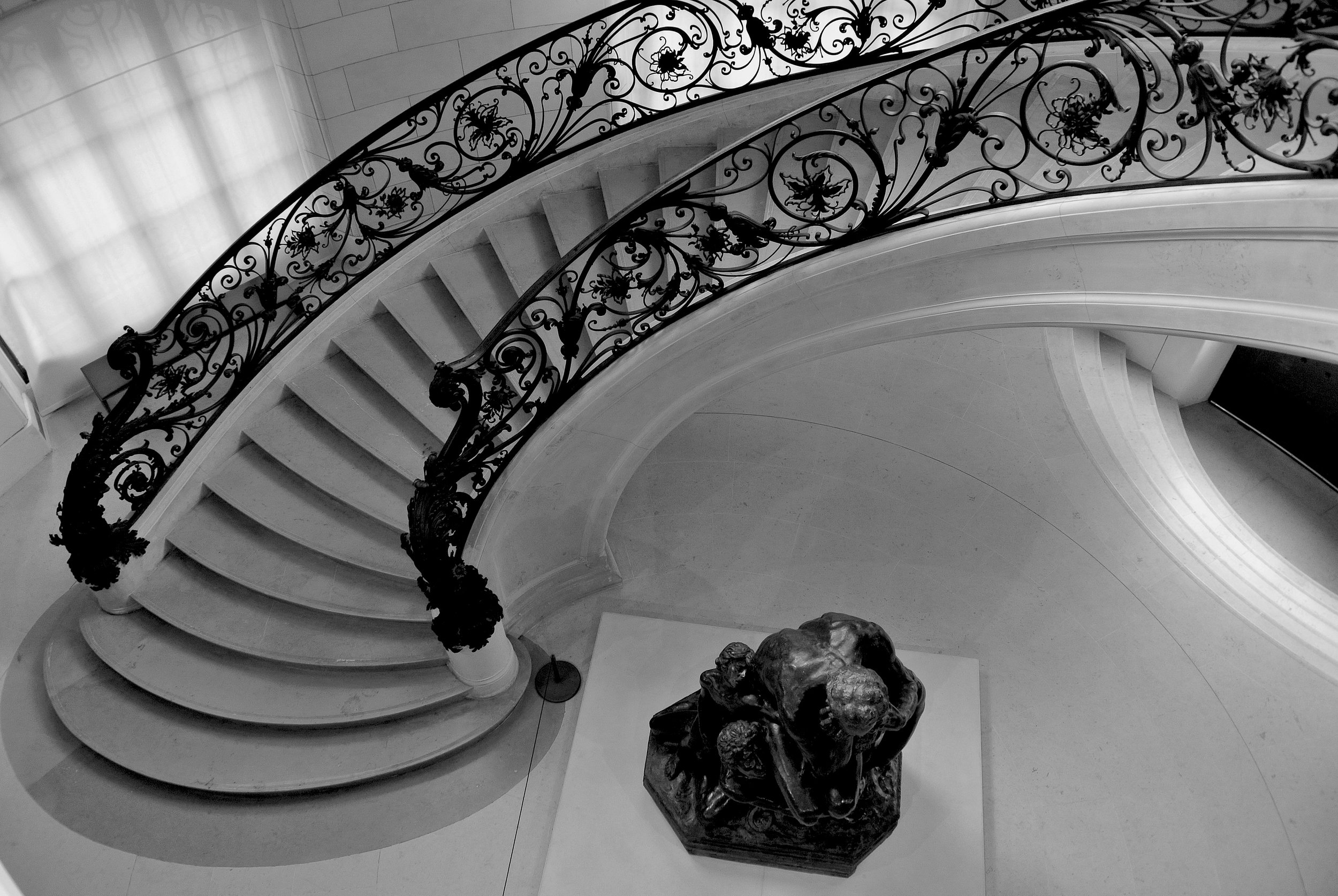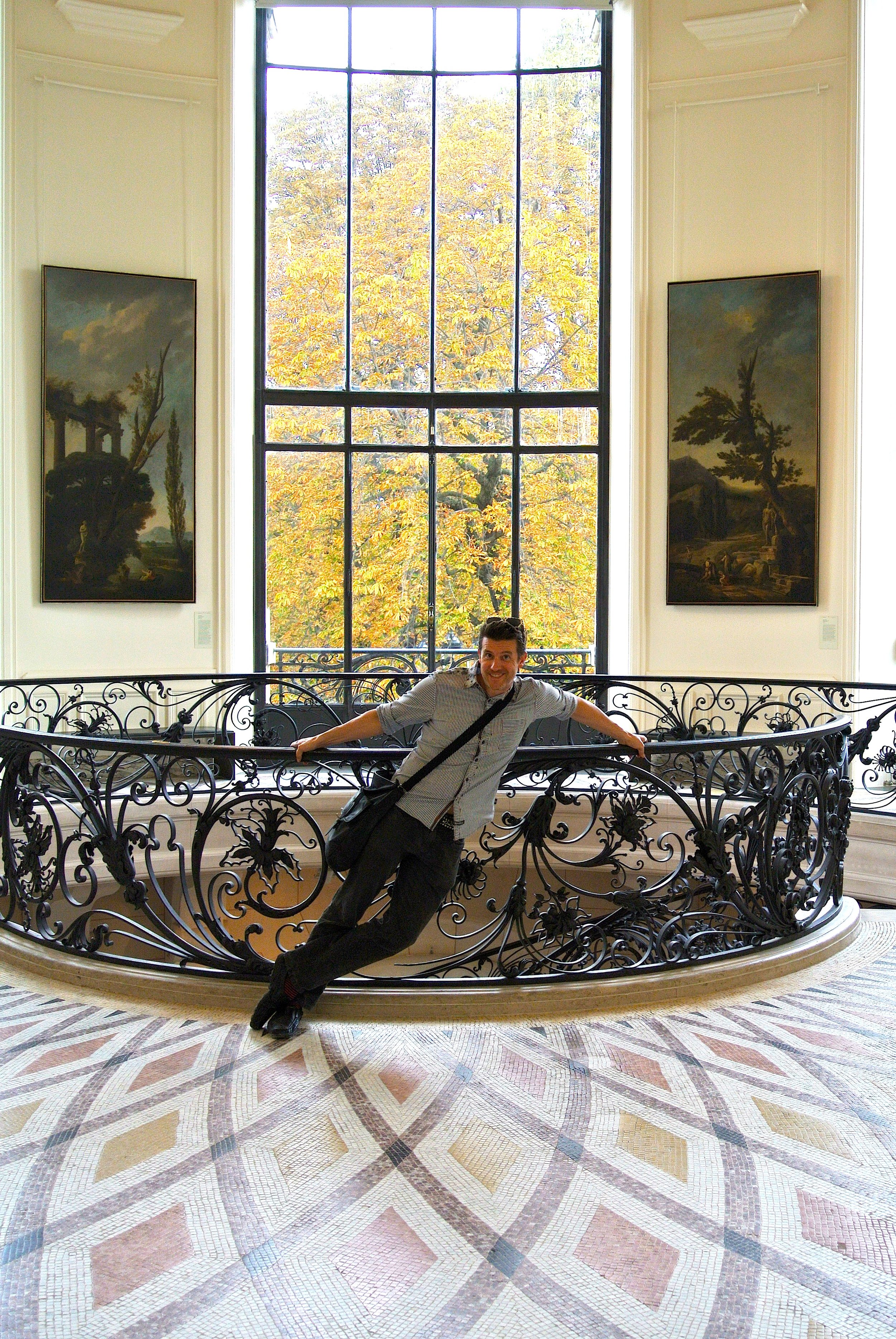Looking for not-so-typical things to do in Paris? Visit this gorgeous palace art museum where the garden café and iron staircases are works of art themselves.
Le Petit Palais (and le Grand Palais across the street) were built as permanent fixtures for the 1900 World Exhibition.
There are so many sites to see in Paris that even after a week, we felt we had barely scratched the surface. There are the biggies (the Louvre, the Eiffel Tower, Montmartre, Notre-Dame) and there are the ones that appeal to Duke’s and my warped sensibilities (the Catacombs, Père Lachaise Cemetery).
And then there are the attractions that make what I like to call the B list. These are the ones that are great to see once you’ve ticked some of the others off your list. Especially if you’ve visited Paris before, you’ve got an opportunity to hit some of the lesser-known sights. You’ll find that there are still so many of these that it can difficult to narrow down even the B list.
Beautiful bas-relief sculptures and amazing metalwork frame the entrance to le Petit Palais.
Le Petit Palais (literally, the Little Palace) is one such site. My mom’s friend had recently been to Paris and she raved about how much she enjoyed this smaller, gorgeous art museum. It’s one of those places we wouldn’t have added to our itinerary if we hadn’t gotten this word-of-mouth recommendation.
But we spent a couple of highly enjoyable hours in this ornate mansion and definitely suggest putting it on your B list.
Here are some fun facts about the Petit Palais.
1. Le Petit Palais was built for the 1900 World Exhibition.
Like its big brother across the Avenue Winston Churchill, the Grand Palais, the structure was intended to stand the test of time, instead of the temporary buildings so often constructed for world’s fairs.
Both sit near another World Exhibition project to beautify the city, the bridge called le Pont Alexandre III. Designed by Charles Girault, the palace consists of four wings around a colonnade that borders a semicircular garden. It took over 20 years to complete.
Part of the intricate façade of the Petit Palais. (Duke and Wally have a soft spot for squirrels.)
2. Fair officials liked the plan because it dealt with what they viewed as an eyesore.
One of the leftover buildings from the 1855 World Fair, the Palais de l’Industrie, ran parallel to the Champs Élysées and blocked views of Les Invalides (where the tomb of Napoleon resides). So when it was suggested to demolish it and build two palaces that fit with the new development plans for Paris, officials green-lit the project.
La Vachalcade by Fernand Pelez, 1896
3. In 1902, it became an art museum.
The Petit Palais’ permanent collection of artwork spans from antiquity to 1920. In one room you may find a 19th century painting of a famous Parisian food market, while in another you’ll be looking at medieval illuminated manuscripts or ancient Greek pottery, Paris Perfect points out.
Porteurs de Farine, Scène Parisienne by Louis-Robert Carrier-Belleuse, 1885
Sometimes we enjoy going to a smaller museum, where you can see the entire collection in a couple of hours, as opposed to the overwhelming Louvre, for instance, where you could wander for over a week and still not see everything.
An added bonus? The Petit Palais is free!
The museum is truly breathtaking, with art to be found every direction you look, including up.
4. Le Petit Palais is famous for its murals.
The Petit Palais is officially known as the Musée des Beaux-Arts de la Ville de Paris (the Paris Fine Arts Museum).
Albert Besnard was given the task of painting four decorative murals for the entrance hall. He named his works of art Matter, Thought, Formal Beauty and Mysticism and worked on them from 1903 to 1910.
Heads-up! Some of the artwork is found on the ceiling.
Don’t forget to look up. Not all of the artwork hangs on the walls. Some of the most impressive pieces are part of the palace itself. The painted ceilings took from 1909 to 1924 to complete. The North Pavilion’s were painted by Ferdinand Humbert, while those in the South Pavilion are by Georges Picard.
There are two main galleries that also have murals. One shows Paris of the past, from the Battle of Lutetia (fought at the bequest of Caesar) to the French Revolution, while the other illustrates a more modern Paris.
Also keep an eye out for the 16 plaster busts set into niches. They’re of famous artists, including Eugène Delacroix.
You have to make sure you see Girault’s gorgeous lace-like iron staircase.
5. The spiraling staircases are true works of art.
Make sure you explore the spiral staircases at Petit Palais. We found one in the back corner and were mesmerized by its graceful metallic curves. The designer, Girault, is credited with creating some of the finest wrought iron work ever. He also designed the golden gate at the entrance as well.
Wally wouldn’t mind living in a place like this.
Now this is the kind of staircase you can make a grand entrance on!
Duke and I were absolutely obsessed with the staircase. The banisters and balustrade consist of curlicues and the spiraling tendrils of plantlife. How the heck did Girault take a hard material like iron and make it look like delicate vines? You have to see this for yourself.
There’s a cute café in the central courtyard of the Petit Palais, along with a lush garden.
6. The courtyard garden is a gorgeous spot to have lunch or take a coffee break.
Our other favorite spot at the palace is le Jardin du Petit Palais, the enclosed garden café. Even though the building is on one of Paris’ major thoroughfares, you’d never know it. Lush plants and a curved row of columns draped in golden garlands provide cover in this secret spot in the central courtyard of the museum.
Grab a bite to eat or a drink (caffeinated or alcoholic) and soak in this peaceful oasis, with its reflecting pools, tropical foliage and stunning mosaic floors. What’s cool is that you’ll see the other side of the palace, where you enter, across the way, as if it’s an entirely different building. –Wally
Consider planning your trip with the TripHobo itinerary planner. Add in your airfare, hotel or homestay and the things you want to see each day — and it’ll even help plan your budget.
Wally attempts to blend in with the statue. Doesn’t look just like a nature goddess?
Le Petit Palais
Avenue Winston Churchill
75008 Paris, France
